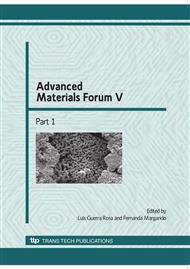p.1434
p.1443
p.1451
p.1459
p.1467
p.1475
p.1483
p.1490
p.1496
Evaluation of the Relationship between Diamond Tool Wear Performance and the Mechanical Properties of the Individual Metallic Binders
Abstract:
A test methodology is employed to investigate the cutting behaviour of five different diamond impregnated tools for cutting hard materials, such as rocks. A set of parameters, which characterise the tool wear (specific wear loss in the tool), and its relationship with the cutting force of the examined tools, are established to evaluate the tool wear performance. The procedure established in this work describes the specifications of the equipment used to carry out the tests, the different cutting conditions, the format of the output parameters and the characterisation of the different materials used (binders and rocks), hence allowing to discuss the overall cutting wear behaviour of the tools. The methodology presented indicates a universally applicable procedure for measuring the wear performance of the diamond tools as, at the same time, it establishes a relationship between wear and the mechanical parameters of the different metallic binder materials used to manufacture the correspondent tools. The procedure is proven to be an indispensable instrument for correctly carrying out wear performance tests and for reliably interpreting the wear mechanisms of the tool.
Info:
Periodical:
Pages:
1467-1474
Citation:
Online since:
January 2010
Price:
Сopyright:
© 2010 Trans Tech Publications Ltd. All Rights Reserved
Share:
Citation:


